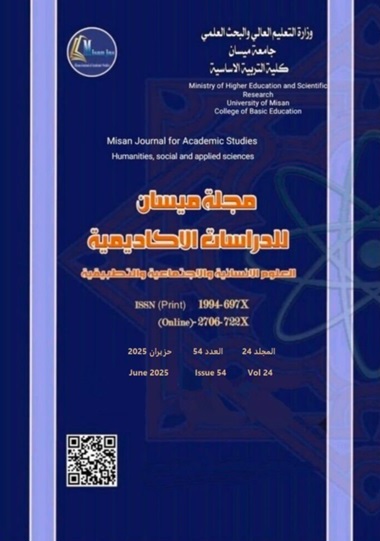The Employment of Historical Symbolism by the Poets of the Seventies Generation:)Khazal Al-Majidi as a Model(
Abstract
Every era has its own history, every generation its time, and every art form its characteristics. This is evident in the poets of the seventies generation. During this period, many poets emerged whose poetry was deeply immersed in the use of symbolism as an equivalent to reality and a means of expressing it. The employment of symbolism had its motives and reasons, prompting poets to utilize symbols to convey societal issues.
Among the most significant symbols frequently employed by poets was the historical symbol, as it represents a glorious past and a rich heritage. Through the evocation of the past in the present, the poet attempts to express a future vision. This was particularly evident in the works of one of the most prominent poets of this generation, Khazal Al-Majidi. His poetry abounded with various symbols, the most notable of which was the historical symbol. This inclination may be attributed to his academic specialization, as he is an expert in ancient history
Downloads
Copyright (c) 2025 (Humanities, social and applied sciences) Misan Journal of Academic Studies

This work is licensed under a Creative Commons Attribution-NonCommercial-NoDerivatives 4.0 International License.
The copyright is also the copyright of the magazine only.
All articles published in our magazine are subject to license terms
Creative Commons Attribution(CC BY-NC-ND 4.0) This license permits the content to be reproduced, redistributed and reused in whole or in part for any purpose free of charge, without any permission from the author(s), researcher or student.
Works submitted to Maysan Journal of Academic Studies for publication in the journal (CC BY-NC-ND 4.0) license terms. Where available content can be shared, distributed and replicated provided there is no commercial profit and appropriate credit must be given to the original source through sources or citations. It is mandatory to review any material used from other sources including shapes, tables, and images for re-use under the terms of the Creative Commons License (CC BY-NC-ND 4.0).Provided that there is no modification to the original content



